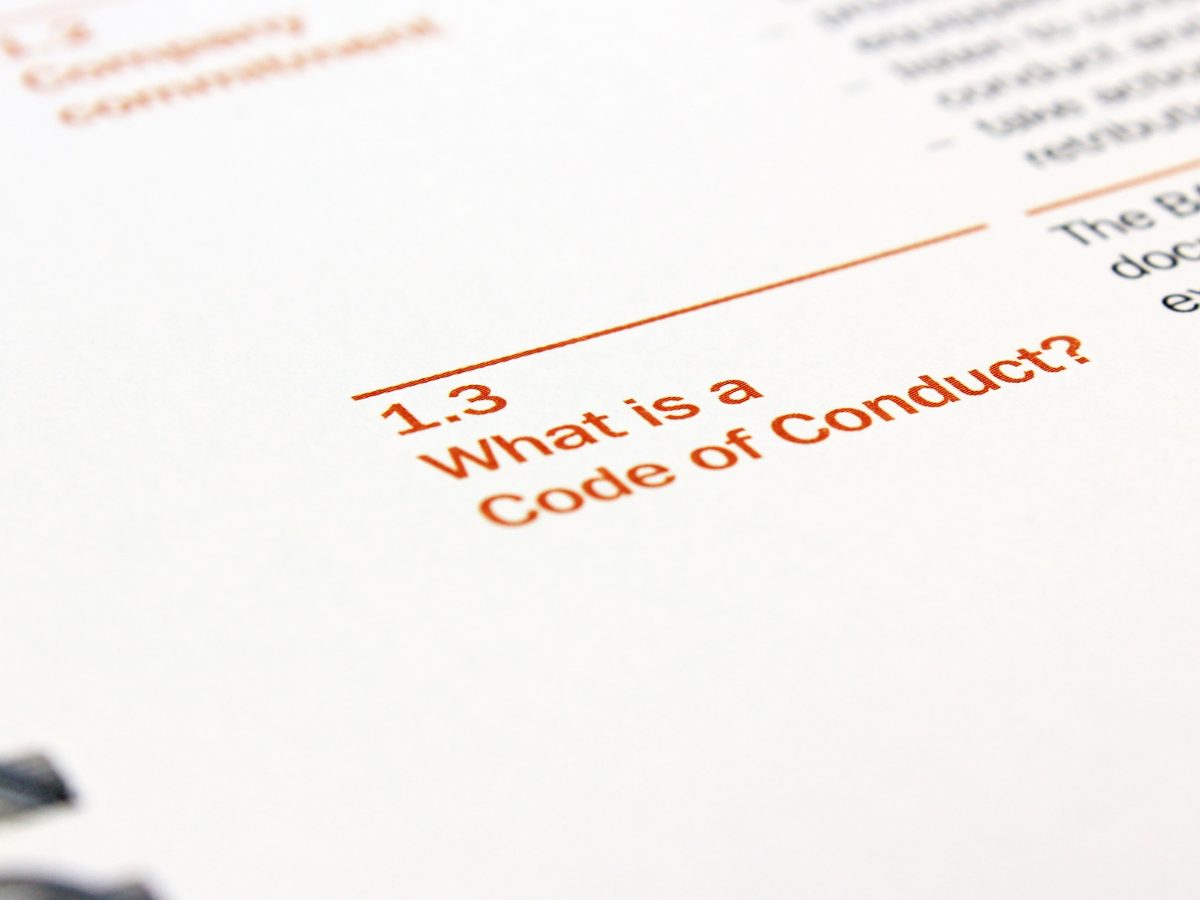Gallup reports that only 15% of employees are engaged at work today. Is your poorly designed code of conduct the cause of this disengagement?
How Relevant is Your Code of Conduct?
If you were to ask everyone in your company, “Who has read the code of conduct?” how many people would say yes? The majority? A few? Hardly anyone? Our guess is hardly anyone. Yet, the code of conduct is possibly the most critical document governing your business. It establishes the company’s relationship with its employees and safeguards its reputation and social licence to operate.
For most organisations, the code of conduct also lays out the legal obligations between parties. This is especially true in the public sector and the larger not-for-profits. It sets out the framework for how people can expect others to treat them at work and the protections for employees in the event of a breach.
Experience suggests that codes of conduct often have little meaning for employees. They don’t understand its contents or how to apply its directions. They simply aren’t motivated to use it as it wasn’t designed with their needs in mind.
Typically, legal departments create the code of conduct. They often write it in ‘legalese’ – the complex version of English that lawyers need to use to make sure that they can defend their documents in a court of law. Many employees don’t understand legalese, nor its full implications. And yet, it’s presented to them on their first day in the workplace as a fait accompli, and they’re told just to sign it.
Most often, staff sign the document despite the company not offering them the chance to read it first. No one mentions the code again until they do something wrong. Often its sole purpose is to reprimand employees for poor behaviour.
Is There a Different Way?
The first step in creating an excellent code of conduct is to identify what the objectives of it are. You must also decide who it is designed for before you can put pen to paper. Is it there to serve the legal department, the HR department, or the needs of employees? If its primary objective is to help employees know what the company expects of them, then you need to start with their needs in mind.
What are the needs of the employee in understanding why their company has a code of conduct? What about the code of ethics? How best can the leaders of the organisation design a code’s content so that it resonates with employees’ needs? You need to create one that you can deliver to suit many different learning styles. It must also be suitable for the differing levels of comprehension that exist throughout most workforces.
Different levels of staff have different accountabilities. They require various content styles and nuances while still being true to the spirit of the code. Each group of staff also requires examples of specific behaviours that represent the company’s standards.
For one organisation, you can have several versions of the training content designed. Each will support the code of conduct’s intent for various staff stakeholders and their unique spheres of influence. Each workshop could be highly interactive, based on authentic workplace challenges that resonate with people in different occupations. Choose examples that work for many levels and those from different demographic backgrounds. Design a code of conduct training to match employees’ needs. To engage your staff, you must do it with this level of detailed nuance. Authenticity and relevance to them and their situation is the first barrier that you must surmount.
So, does your code guide conduct, shape the context in which people work, and give them a sense of purpose? Or, does it just sit on their employee file as a ticking performance time bomb?
This piece is an extract from a forthcoming book on how to make your code work, rewritten for context.
Please fill out the form below to get in touch regarding your organisation’s needs and we will get back to you as soon as possible. You can also call us on 0430 889 850 or email us directly at [email protected].
|
|

